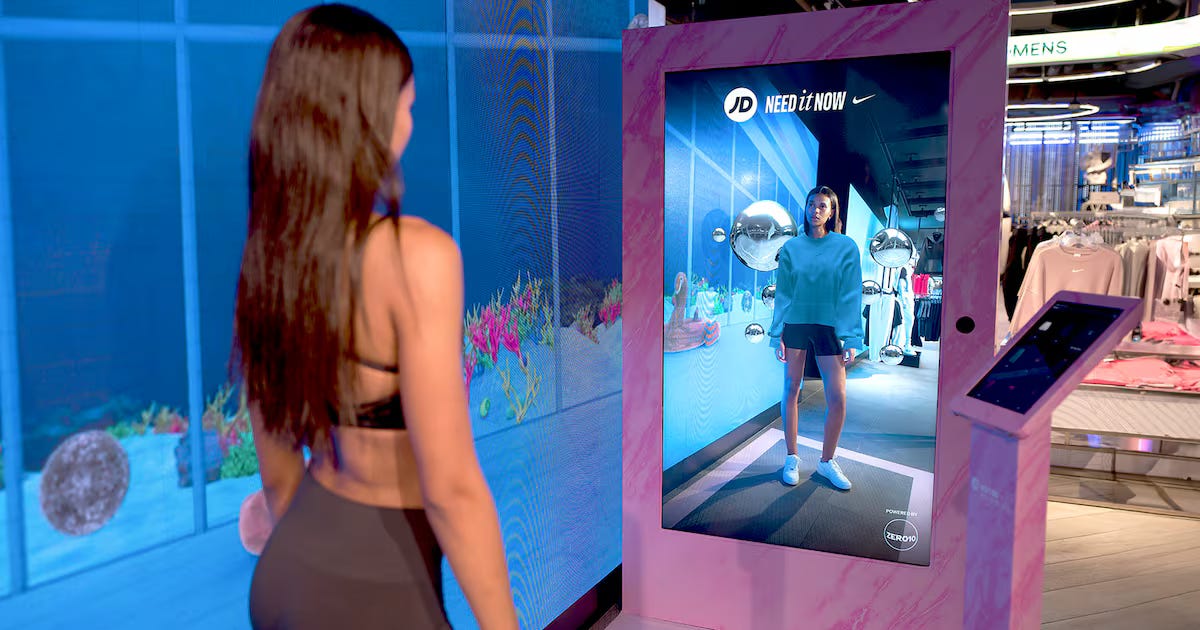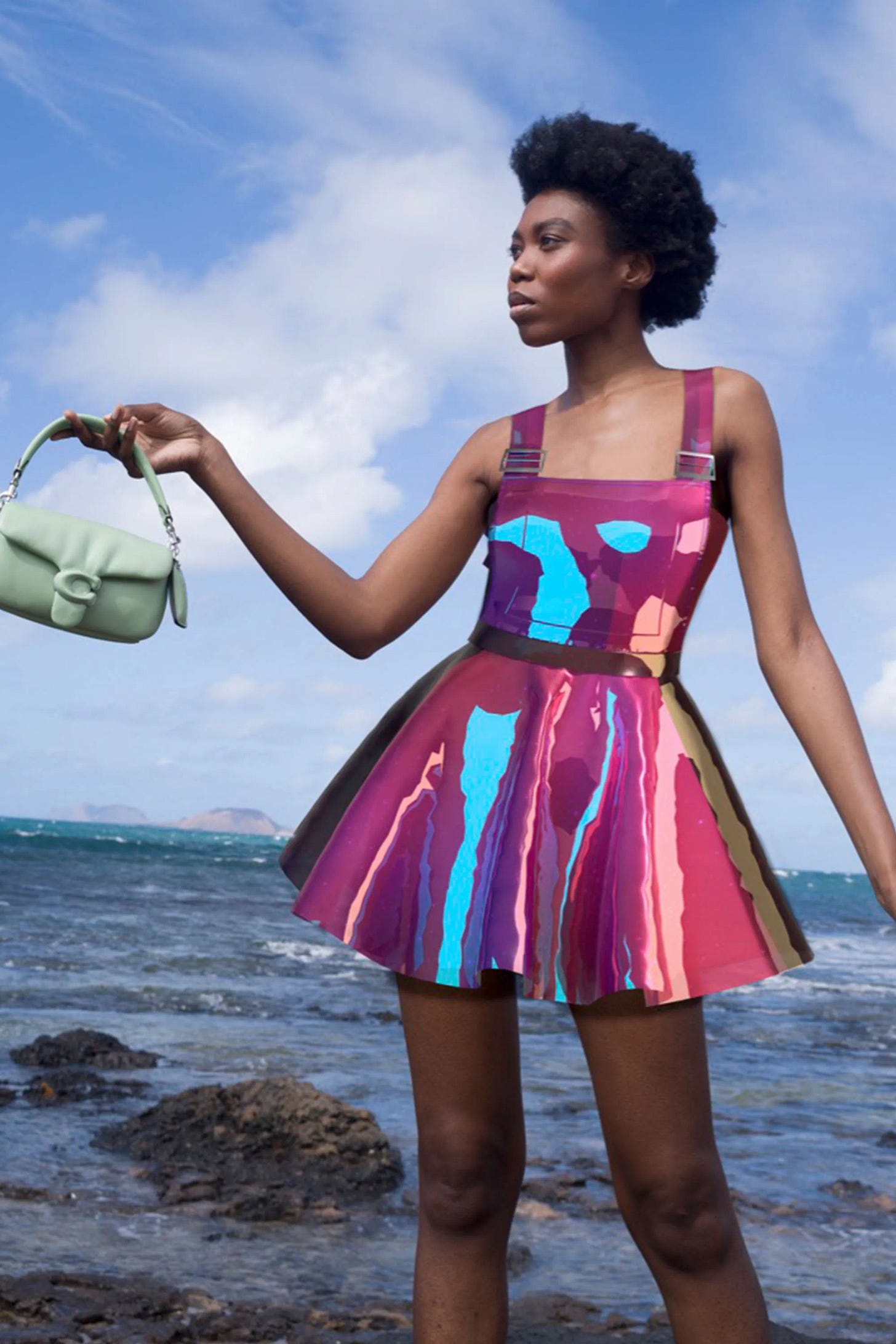Exploring Job Types in the Fashion Tech Industry
What does it take to work in the fashion tech industry? What should you study and where do your passions lend themselves best to?
The fashion tech industry, an intersection of fashion and technology, is revolutionizing how fashion is designed, produced, marketed, sold, and experienced. This rapidly growing field offers diverse career opportunities that blend creativity, technical skills, and innovation. Here’s an in-depth look at some of the key job types in the fashion tech industry.
1. Fashion Technologist
Role and Responsibilities
Fashion technologists work on the practical side of garment production, focusing on the materials and methods used to create clothing. They provide fashion designers and buyers with technical support throughout the design and manufacturing process to ensure that garments are made in line with the brands vision and budget.Their responsibilities include:
Material Testing: Ensuring fabrics meet quality standards.
Production Processes: Optimizing manufacturing techniques for efficiency and sustainability.
Product Development: Collaborating with designers to bring innovative ideas to life.
Required Skills
Strong understanding of textile properties.
Proficiency in manufacturing processes.
Problem-solving abilities.
2. Digital Fashion Designer
Role and Responsibilities
Digital fashion designers use advanced software to create virtual clothing and accessories. Their work is essential for virtual fashion shows, online retail, and augmented reality (AR) applications. Key tasks include:
3D Modeling: Creating digital prototypes of garments.
Virtual Fittings: Simulating how clothes fit on virtual models.
Design Collaboration: Working with other designers and technologists to refine digital designs.
Required Skills
Expertise in 3D design software like CLO 3D or Marvelous Designer.
Creative flair and attention to detail.
Basic understanding of pattern making, fashion trends, and consumer preferences.
3. E-commerce Manager
Role and Responsibilities
E-commerce managers oversee the online sales strategy for fashion brands. They ensure that the digital storefront is optimized for user experience and sales performance. Their role is crucial in ensuring that the brand’s online presence is compelling and effective in converting visitors into customers. Their responsibilities include:
Website Management: Maintaining and updating the online store.
Digital Marketing: Implementing SEO, PPC, SEM and social media campaigns.
Analytics: Using data to drive sales strategies and improve user experience.
Required Skills
Proficiency in e-commerce platforms like Shopify or Magento.
Strong analytical skills and experience with web analytics tools & user experience (UX) design
Knowledge of digital marketing techniques.
4. Fashion Data Analyst
Role and Responsibilities
Fashion data analysts interpret data to help companies understand market trends, consumer behavior, and operational efficiencies to make informed decisions. This role requires a strong background in data analysis and an understanding of fashion industry metrics. Their tasks include:
Data Collection: Gathering data from various sources, such as sales reports and social media.
Data Analysis: Using statistical tools to identify trends and patterns.
Reporting: Presenting findings to stakeholders to inform business decisions.
Required Skills
Strong background in statistics, data analysis and visualization.
Proficiency in data analysis software like SAS, R, or Python.
Excellent communication skills for presenting data insights.
5. UX/UI Designer
Role and Responsibilities
UX/UI designers create engaging and intuitive user interfaces for fashion tech applications. They ensure that digital platforms provide a seamless experience for users. Key responsibilities include:
User Research: Understanding user needs and preferences.
Wireframing and Prototyping: Designing the layout, aesthetic, usability and functionality of digital products.
Usability Testing: Conducting tests to refine and improve the user experience.
Required Skills
Proficiency in UX design tools: Figma & Figjam.
Strong understanding of user-centered design principles.
Ability to work collaboratively with developers and other designers.
(Note from Mary: This is what I do! And I LOVE my job! I’m happy answer any questions you have specific to UX/UI and product design! To give you more context, I got my bachelor’s degree in Product Design from the University of Minnesota.)
6. AR/VR Developer
Role and Responsibilities
AR/VR developers create immersive experiences for fashion brands, such as virtual try-ons, fashion shows, and interactive shopping experiences. Their tasks include:
App Development: Building AR/VR applications for various platforms.
3D Modeling: Creating realistic virtual environments and clothing items.
User Testing: Ensuring that the applications are intuitive and engaging.
Required Skills
Proficiency in AR/VR development tools like Unity or Unreal Engine.
Strong 3D modeling and animation skills.
Knowledge of user experience design.
7. Software Engineer
Role and Responsibilities
Software engineers in the fashion tech industry develop and maintain the software systems that support various applications, from e-commerce platforms to virtual fitting rooms. Their key responsibilities include:
Software Development: Writing code for new applications and features.
System Integration: Ensuring different software systems work seamlessly together.
Testing and Debugging: Identifying and fixing bugs to improve software performance.
Required Skills
Proficiency in programming languages like Java, Python, or JavaScript.
Experience with software development methodologies such as Agile.
Strong problem-solving skills and attention to detail.
8. Product Manager
Role and Responsibilities
Product managers in the fashion tech industry oversee the development and lifecycle of fashion tech products. They work closely with cross-functional teams to ensure products meet market needs and business goals. Key responsibilities include:
Market Research: Understanding market trends and customer needs.
Product Strategy: Defining the product vision and roadmap.
Project Management: Cross-functional team coordination between designers, engineers, and marketers to bring products to market.
Required Skills
Strong understanding of product management principles.
Excellent communication and leadership skills.
Ability to analyze market data and user feedback.
9. AI and Machine Learning Specialist
Role and Responsibilities
AI and machine learning specialists in the fashion tech industry develop algorithms and models to enhance various aspects of fashion, from design to personalization and inventory management. Their responsibilities include:
Algorithm Development: Creating models to predict trends and optimize processes.
Data Analysis: Using machine learning techniques to analyze large datasets.
Integration: Implementing AI solutions into existing systems.
Required Skills
Proficiency in machine learning frameworks like TensorFlow or PyTorch.
Strong background in statistics and programming.
Ability to work with large datasets and complex algorithms.
10. Fashion Marketer
Role and Responsibilities
Fashion marketers develop and execute marketing strategies to promote fashion tech products and brands. Their tasks include:
Campaign Development: Creating marketing campaigns across various channels.
Brand Management: Building and maintaining a strong brand presence.
Market Analysis: Understanding consumer behavior and market trends to inform marketing strategies.
Required Skills
Strong knowledge of marketing principles and techniques.
Experience with digital marketing tools and platforms.
Creative thinking and strong communication skills.
Conclusion
The fashion tech industry offers a plethora of exciting career opportunities for those who are passionate about both fashion and technology. Whether you’re inclined towards design, data analysis, engineering, or user experience, there’s a role for you in this innovative field. Embracing these diverse job types can lead to a dynamic and fulfilling career at the cutting edge of fashion and technology.
What’s next? You choose!
Or let me know what topics you’d like to dive deeper into below!








